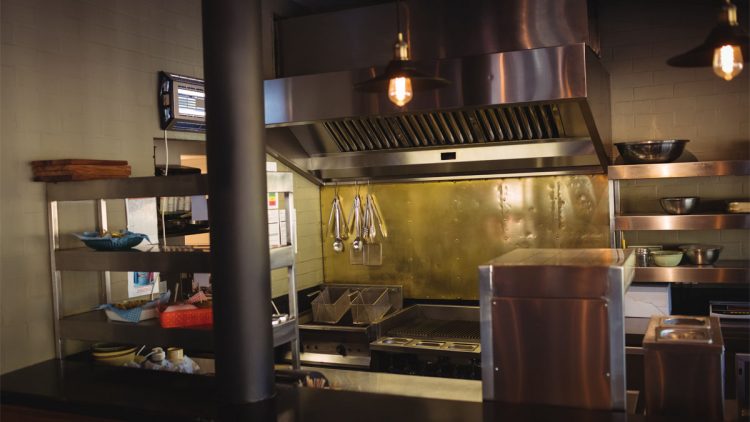Kitchen Exhaust & Restaurant Hood Cleaning
According to law, kitchen exhaust cleaning and restaurant hood cleaning are required for just about every commercial cooking establishment in the US. Restaurants, employee cafeterias, hotels, hospitals, and other food service areas have a hood and ductwork over their stoves or ranges to exhaust smoke, fumes, and steam out of the kitchen and building.
These exhaust gases produce a residue on the inside of the hood and ductwork. A lot of grease buildup, whether it be in a home or restaurant, creates a fire hazard.
What Kind of Kitchen Exhaust Cleaning Services Are There?
There are two main methods of cleaning kitchen grease exhaust and hoods, depending on your restaurant needs or local and state fire authority requirements.
Scraping
Scraping is more budget friendly and is highly effective when performed correctly and thoroughly. Scraping of restaurant kitchen duct systems complies with state and local laws.
Pressure Washing or Steam Cleaning
Pressure washing or steam cleaning is more expensive and takes more time, because it needs significant prep work to control the wastewater and more costly equipment is used. None the less, using this method will clean the ductwork more thoroughly, in particularly hard-to-reach places found in a small number of systems. This is the reason why pressure washing might be required by local policies.
Restaurant Hood Cleaning
Kitchen exhaust cleaning is commonly known as restaurant hood cleaning or commercial hood cleaning. As they all relate to the same process, but hood cleaning is a bit misleading. The actual hood is outside the exhaust system and kitchen exhaust cleaning requires removing grease that has collected in the fans and ducts, and behind the exhaust filters of kitchen exhaust systems.
How Frequently Should a Kitchen Exhaust Be Cleaned?
Recommended cleaning frequency will depend on the type of your cooking establishment:
- 30 days: Charcoal-burning stoves, wood-burning or char broilers, open 24-hour restaurants, pizza places and some hamburger places
- 60 days: A lot of fast-food locations and hamburger restaurants
- 90 days: The average restaurant, employee cafeterias, hotels or hospital kitchens
- 180 days: Some pizza places, healing hospitals or small snack bar types
- 1 year: Hoods that are over non-grease-producing appliances, like steam kettles, soup vats or dishwashers
Kitchen Grease Fires
It is approximated that one of three restaurant fires are caused by grease build up. Here is a common way of how a kitchen exhaust fire starts:
- A flame flares up on the range.
- The fire comes in contact with the filters above the range on the kitchen hood. The filters then ignite.
- Because the exhaust fan is on, pulling air into the hood, through the filters, and inside the duct, the flame on the filters is drawn into the duct.
- If considerable grease residue has collected on the interior of the duct, this may act as an accelerant and the fire spreads up the duct, maybe even all the way into the fan.
The National Fire Protection Association (NFPA) requires all commercial kitchen exhaust hoods be inspected at particular intervals, depending on the cooking volume and type of cooking done.
Desert Oasis Commercial Cleaners Offers Restaurant Cleaning Services in Phoenix & Throughout The Valley of the Sun.
To schedule restaurant kitchen cleaning services in Phoenix, learn more about Desert Oasis’s restaurant kitchen cleaning services, or to get a free restaurant kitchen cleaning services quote, use our contact form to submit a request or call Desert Oasis Cleaners today at 1-480-720-0907.
Download Out Restaurant Cleaning Checklist Here.

